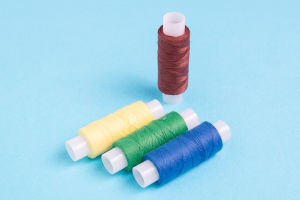Hey, Lykkers! Did you ever play with toy blocks growing up? Whether it's simple stacking or building grand structures, toy blocks are an ageless joy that stirs imagination and creativity. What's the coolest thing you ever built with them?
Toy blocks aren't just fun; they're also essential learning tools. Let's dive into how these colorful cubes help kids grow, learn, and explore their creative sides.
The History of Toy Blocks
Toy blocks have been around for centuries, first appearing as wooden sets in the late 1600s. Since then, they've evolved into a staple of childhood, coming in various forms like plastic, foam, or even magnetic versions. But their purpose remains the same: inspiring children to build and learn.
Classic block sets like Lego and wooden alphabet blocks have left a lasting impression on generations, becoming timeless tools for both fun and education. The versatility of toy blocks encourages open-ended play, which fosters creativity and problem-solving skills.
Developing Fine Motor Skills
One of the biggest benefits of playing with blocks is that it helps develop fine motor skills. Whether kids are stacking blocks, lining them up, or fitting them together, these simple actions improve hand-eye coordination and dexterity. As children manipulate blocks, they also learn spatial awareness, which is crucial for understanding the physical world around them.
These motor skills are vital in early development, helping with tasks from writing to everyday activities. Plus, all this learning happens while they're having a blast!
Enhancing Problem-Solving and Creativity
Toy blocks aren't just about building towers—they're about solving problems. As kids figure out how to balance blocks, create sturdy structures, or even troubleshoot when something falls apart, they learn critical thinking. Each block becomes a puzzle piece in a bigger picture, allowing kids to tap into their creativity.
There are no rules when it comes to block play, which means that imagination is the only limit. Whether creating a simple house or an entire city, children are continually thinking ahead, experimenting, and improving.
Fostering Social Skills and Teamwork
Blocks aren't just for solo play—they're great for group activities too. When kids collaborate to build something together, they learn how to share ideas, communicate effectively, and cooperate. These moments teach them the value of teamwork and collaboration.
Children also learn how to negotiate and resolve conflicts when deciding what to build or who gets which blocks. Group block play encourages social development, helping kids understand the importance of working together towards a common goal.
Toy Blocks in Education
Educational institutions recognize the immense value of toy blocks, incorporating them into early learning curriculums. Block play encourages problem-solving, critical thinking, and STEM skills, making them a go-to tool in schools and preschools. Teachers use blocks to introduce basic math concepts like counting, patterns, and symmetry, all while keeping the activities fun and engaging.
They also serve as a foundation for teaching scientific concepts like gravity and balance, making learning through play a core part of the educational process.
Toy blocks are more than just a childhood staple—they're key tools for learning, socializing, and sparking creativity. Whether building a tower or imagining a whole world, they're always shaping young minds in the best way possible.


